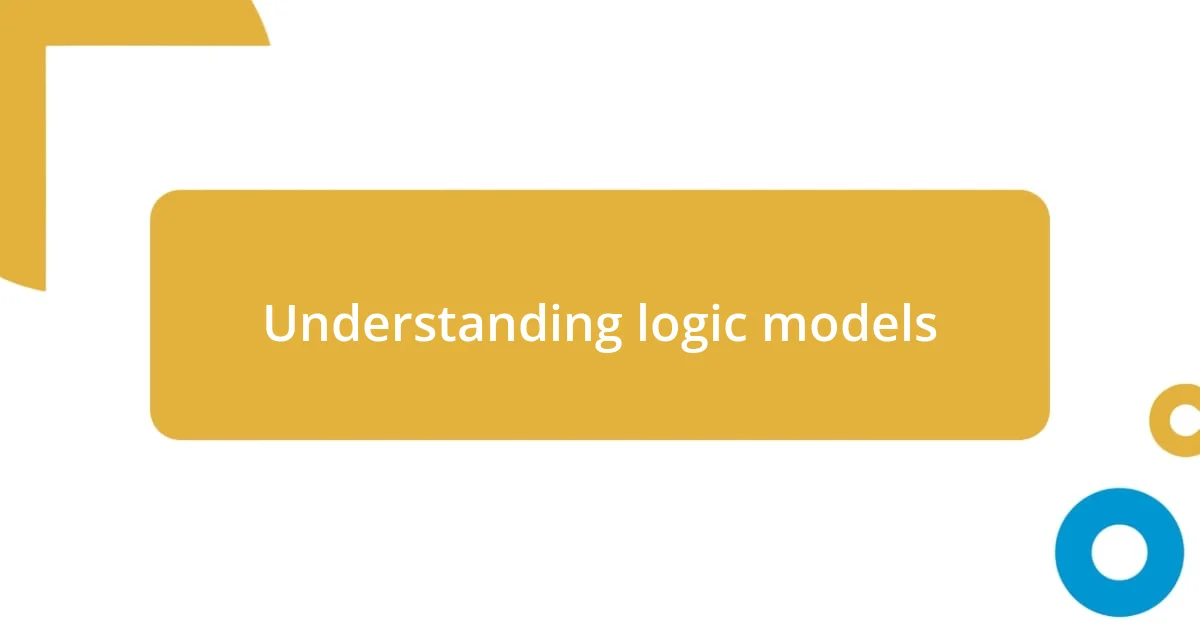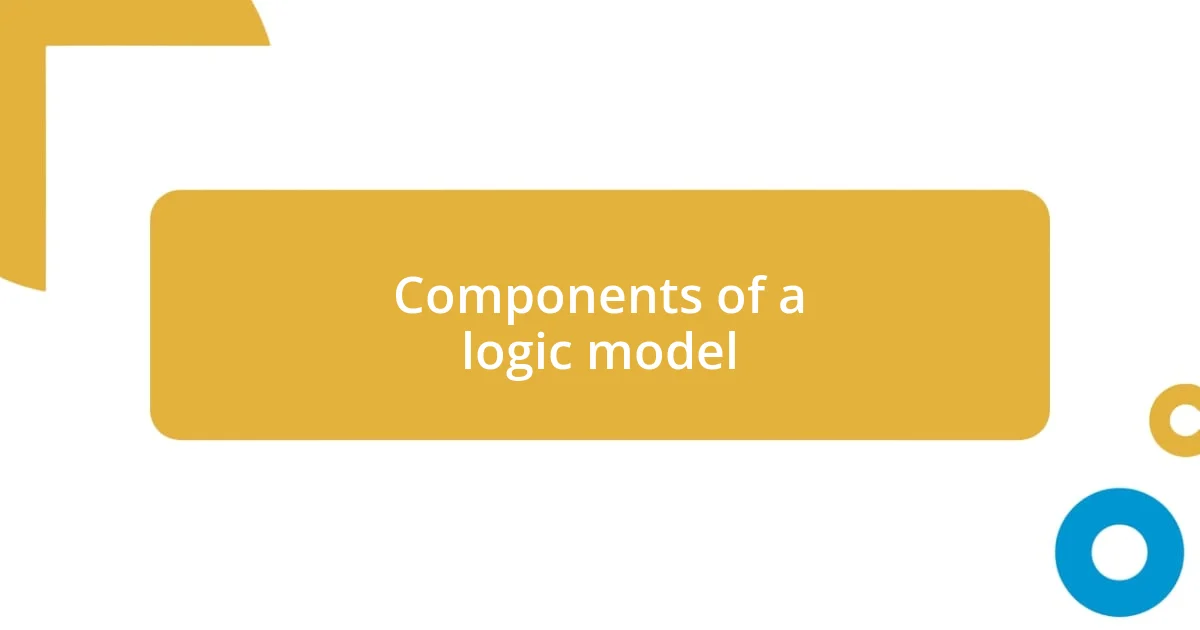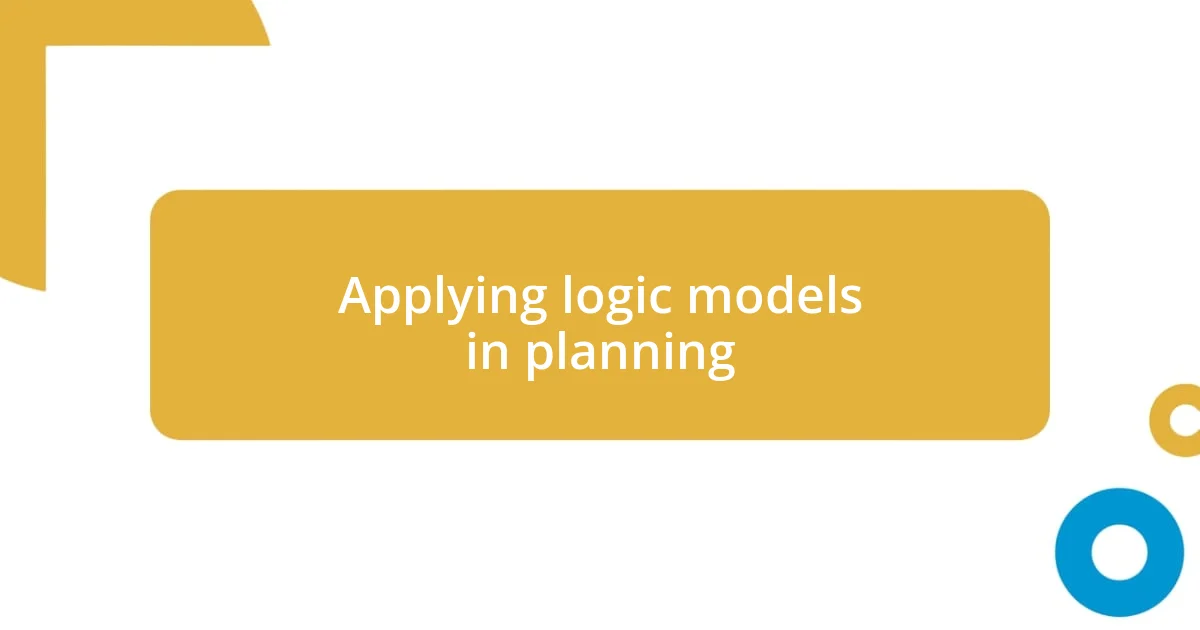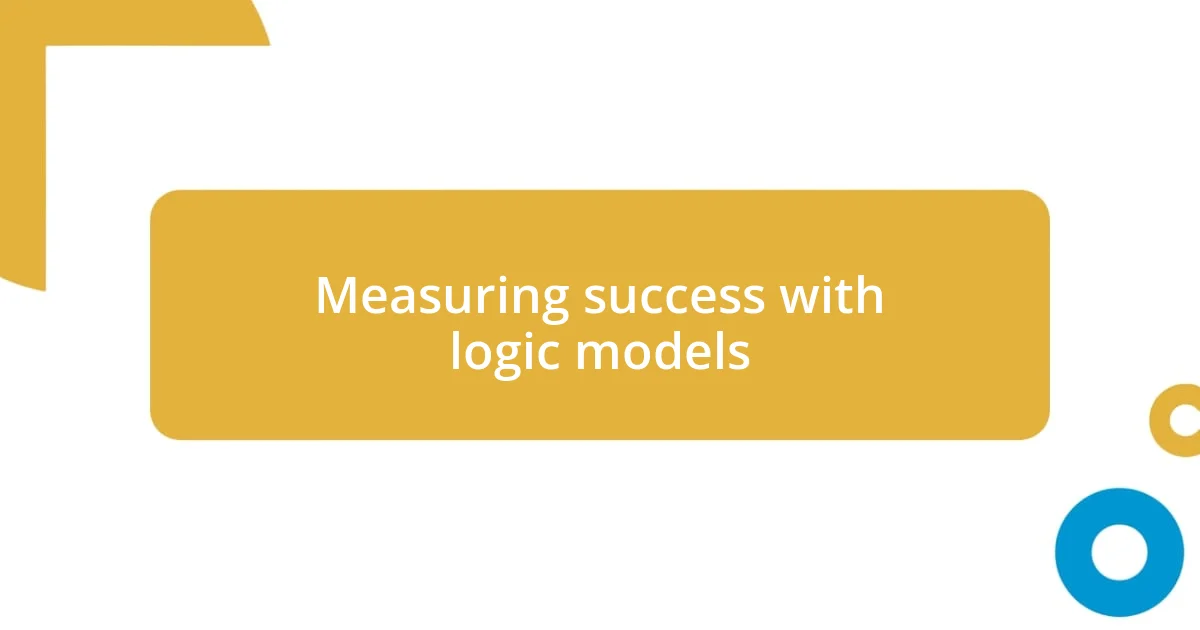Key takeaways:
- Logic models serve as visual tools that clarify relationships between resources, activities, and outcomes, enhancing effective planning and decision-making.
- The components of a logic model—including inputs, activities, outputs, and outcomes—are interconnected, ensuring a comprehensive approach to project strategy and accountability.
- Utilizing logic models facilitates stakeholder engagement, uncovers potential challenges, and allows for precise measurement of success, transforming project outcomes into meaningful narratives.

Understanding logic models
Logic models, at their core, are visual representations that map out the relationships between resources, activities, outputs, and outcomes within a program. I remember the first time I created one; it felt like piecing together a puzzle. The clarity that emerged as I laid out the connections was a relief. Have you ever experienced that moment when everything clicks into place?
When I think about how logic models help me plan effectively, I consider them my compass. They guide me in decision-making, ensuring that every step from inputs to anticipated outcomes is aligned. It’s slightly exhilarating to project what success looks like—like having a clear vision of the destination before setting out on a journey. Don’t you find that with direction, you’re less likely to stray off course?
One of the most powerful aspects of a logic model is its ability to facilitate communication among stakeholders. I’ve found that sharing a logic model can often spark discussions that dig deeper than traditional approaches. It invites questions and insights that might otherwise be overlooked, fostering a collaborative environment. Isn’t it amazing how one simple tool can transform a conversation into a strategic dialogue?

Components of a logic model
When delving into the components of a logic model, I find it helpful to visualize them as interconnected building blocks. Each component serves a unique purpose, contributing to the model’s overall effectiveness. It’s like assembling a piece of furniture where each part has a specific function; if one piece is missing or misaligned, the whole thing can wobble. This realization hit me during a workshop where we struggled with a project that lacked clarity—once we laid out our components, the project took on a life of its own.
Here are the key components typically found in a logic model:
- Inputs: The resources, time, and funding required for the project.
- Activities: Specific actions or interventions conducted using the inputs.
- Outputs: The tangible products or services resulting from the activities.
- Outcomes: The short-term, intermediate, and long-term changes or impacts expected from the outputs.
- Assumptions: The beliefs about how and why the activities will lead to desired outcomes.
- External Factors: Influences outside the program that could affect success.
In my experience, each component is essential in creating a cohesive and logical flow of information. During one project, analyzing our assumptions made me realize we had been overly optimistic about certain factors, which helped in recalibrating our strategy. This richness of detail not only grounds the planning process but also enhances transparency and accountability.

Applying logic models in planning
Applying logic models in planning
Using logic models in planning allows me to approach my projects with remarkable clarity. As I map out the inputs and expected outcomes, I can visualize potential roadblocks along the way. There’s something liberating about identifying challenges upfront; it’s like having a safety net ready for when the unexpected occurs. Have you ever approached a project and realized you missed a critical step? Logic models help prevent that feeling of panic.
One memorable instance was when I managed a community health initiative. By creating a logic model, I uncovered gaps in our activities that could have jeopardized our outcomes. It’s as if the model provided a lens through which I could scrutinize our plan in detail. Seeing everything laid out visually illuminated areas that needed adjustment, ultimately saving us time and resources. It’s fascinating how a simple diagram can alter the course of a project!
Moreover, when I bring my logic model into stakeholder meetings, I witness its true power. Just recently, I presented a model during a project update, leading to invaluable feedback and fresh ideas. The collaborative spirit that emerged was infectious, making everyone feel ownership of the project. Isn’t it gratifying when a tool not only enhances your planning but also engages others in deeper conversations?
| Aspect | Logic Model |
|---|---|
| Definition | A visual representation that outlines a program’s resources, activities, outputs, and outcomes. |
| Purpose | To clarify relationships and guide decision-making in project planning. |
| Benefits | Enhances communication, facilitates stakeholder engagement, and uncovers potential challenges. |
| Experience | Offers personal insights and epiphanies during planning and strategy development. |

Measuring success with logic models
Measuring success with logic models is an enlightening process that often reshapes my understanding of project outcomes. When I define success at the outset, I’m not merely jotting down vague goals; I’m laying out specific, measurable outcomes tied directly to every component of the model. During a recent environmental project, pinpointing these metrics helped my team recognize the stark difference between activity completion and actual community impact. Have you ever thought you succeeded based on a checklist, only to realize the results didn’t match your expectations? It’s a jarring realization that a logic model can help you avoid.
In one of my favorite initiatives, where we aimed to boost literacy rates among children, our logic model became a roadmap to success. As we tracked our outputs—like the number of books distributed and reading sessions held—we could measure outcomes more effectively. The moment we saw increased engagement during reading sessions reflected in improved test scores, I felt a sense of accomplishment that was deeply rewarding. Nothing beats the thrill of seeing tangible change unfold from our well-laid plans. Isn’t it incredible how a visual tool like a logic model makes those wins visible and meaningful?
Reflecting on my journey, I realize that measuring success isn’t simply about charts and numbers; it’s genuinely about understanding the journey of transformation. Each outcome achieved represents countless stories and lives touched. I remember an evaluation meeting where we shared heartfelt testimonials from parents whose children had flourished. That feedback underscored the importance of our work, grounding every data point in emotional significance. So, when faced with your next project, think about how your logic model can not only track success but also narrate the profound impact of your efforts.














